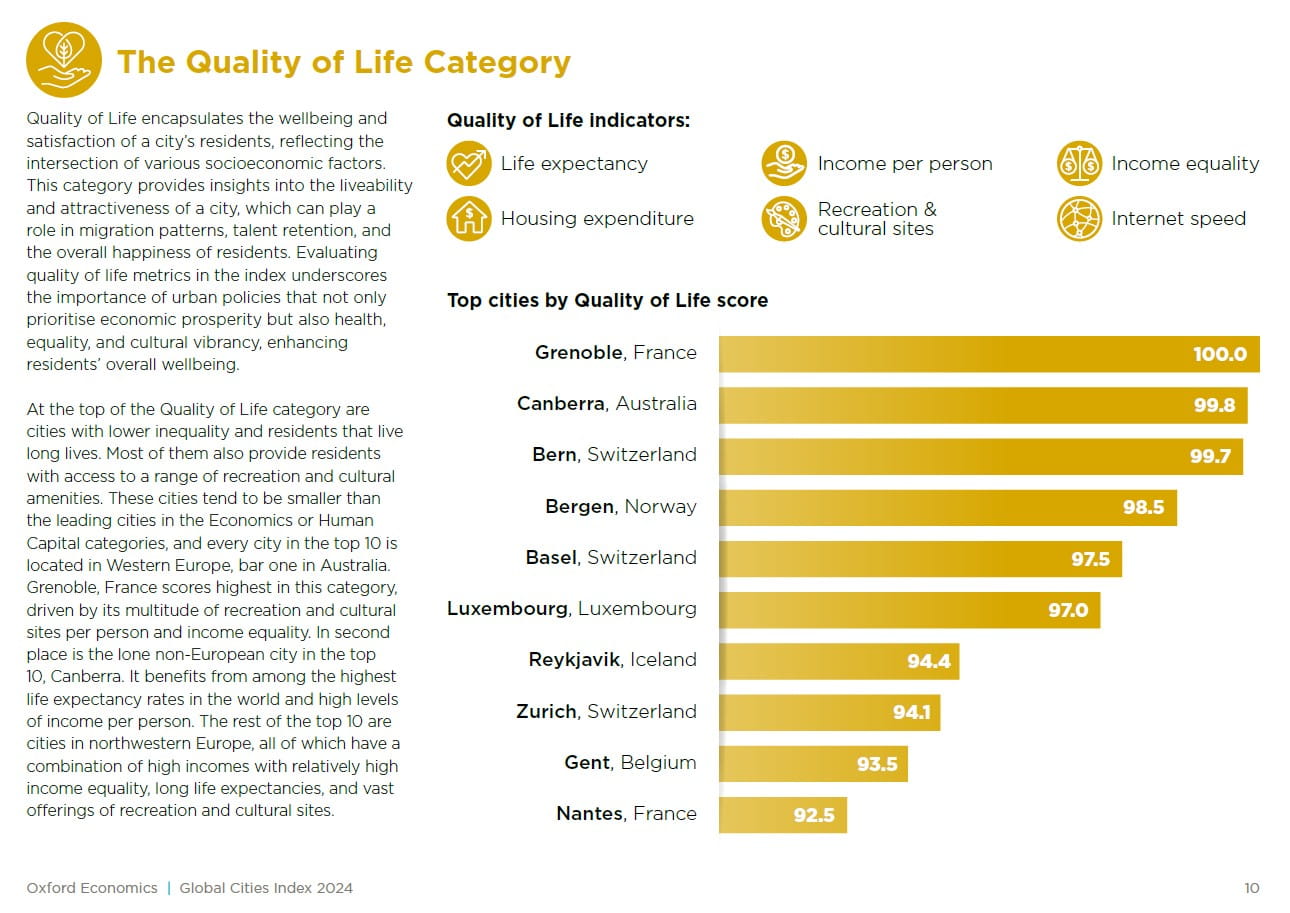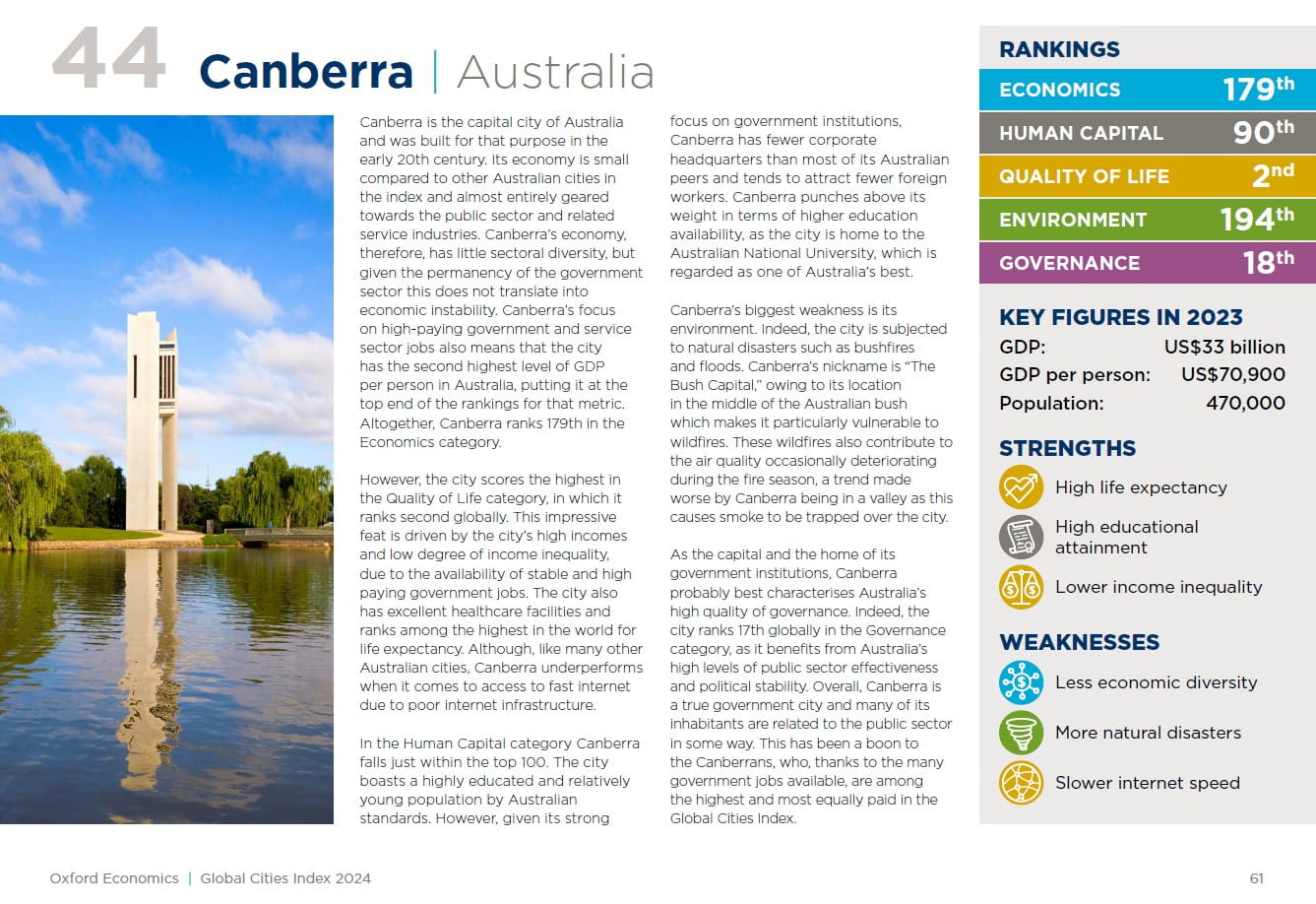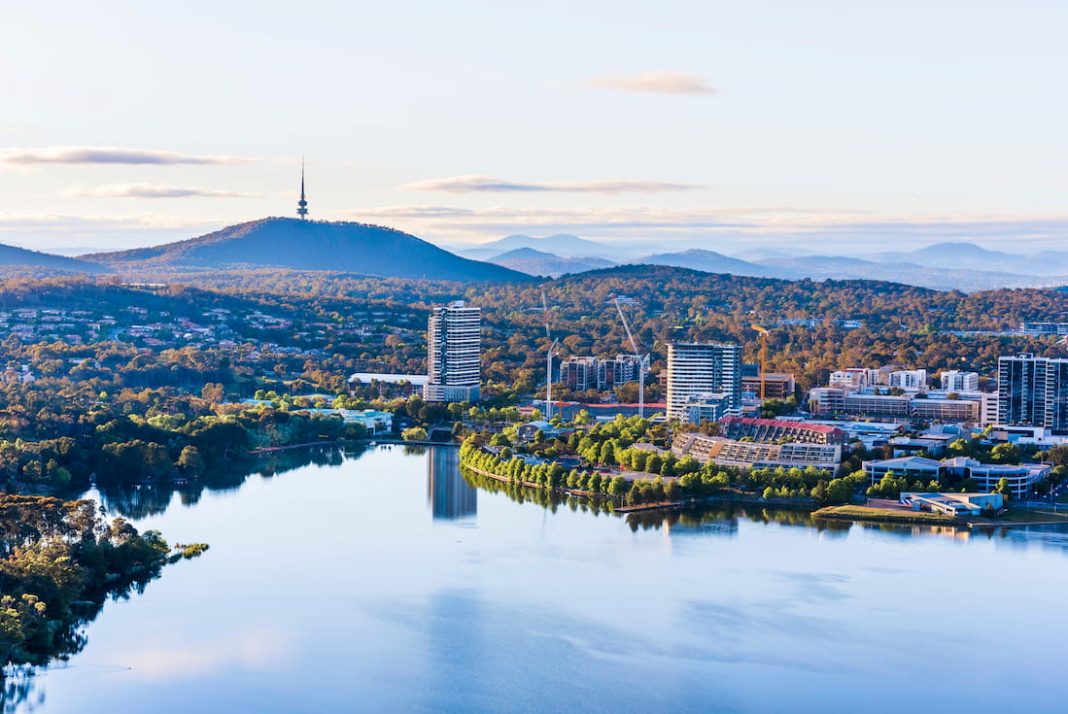Canberra is the second-best city in the world for quality of life, according to the latest report by the Oxford Economics Global Cities.
The quality of life measure encapsulates the wellbeing and satisfaction of a city’s residents. The indicators used to rank each city include life expectancy, income per person, income equality, housing expenditure, recreation and cultural sites, and internet speed.
Canberra was ranked behind just Grenoble in France and was the only Australian city ranked in the top 10 for quality of life.

The Oxford Economics Global Cities report uses an additional four categories to rank cities. These include economics, human capital, environment, and governance.
Despite the high ranking for quality of life, Canberra did not feature in the top 10 of any of the other categories and came in as the 44th best city in the world overall.
Canberra’s worst categories were environment (194th) and economics (179th), while Australia’s capital city cracked the top 100 for human capital (90th) and the top 20 for governance (18th).
Canberra was rated as the fifth-best Australian city overall, behind Melbourne (9th), Sydney (16th), Perth (23rd) and Brisbane (27th). New York was ranked as the number one city in the world.
According to the report, Canberra’s strengths are high life expectancy, high educational attainment and lower income inequality.
The city’s weaknesses are listed as less economic diversity, more natural disasters and slower internet speed.
The report states that Canberra’s biggest weakness is the environment and uses the nickname ‘The Bush Capital’ against the city.
“Canberra’s biggest weakness is its environment. Indeed, the city is subjected to natural disasters such as bushfires and floods. Canberra’s nickname is ‘The Bush Capital,’ owing to its location in the middle of the Australian bush which makes it particularly vulnerable to wildfires. These wildfires also contribute to the air quality occasionally deteriorating during the fire season, a trend made worse by Canberra being in a valley as this causes smoke to be trapped over the city,” the report stated.
The report covered the 1,000 largest cities in the world. Click here to read more about the report.




